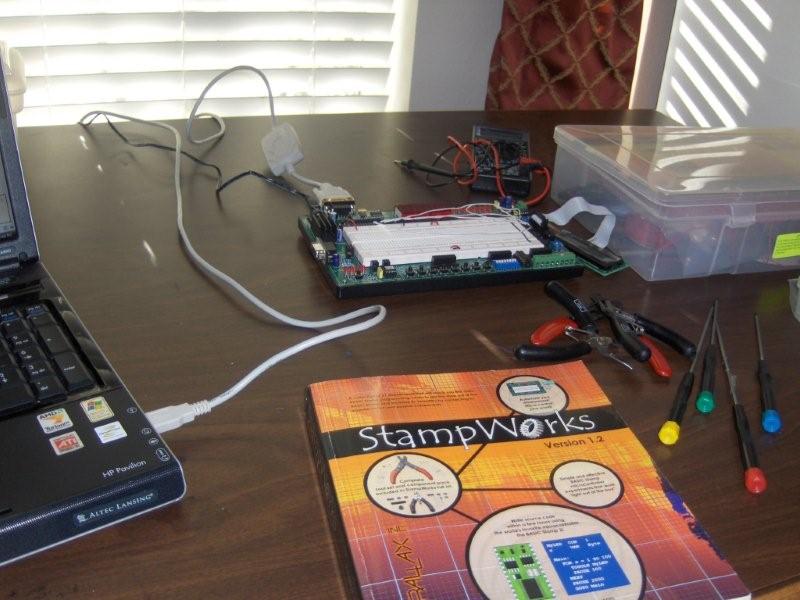Next time you create a “Mailto:” link, consider adding a subject, beginning body, and maybe some people to CC. I found this page really useful:
Monthly Archives: December 2007
Jing – Visual conversations
So, how often have you wanted to make a short screen recording with audio? or maybe take a snapshot of a page and mark it up to email to somebody?
Maybe you are experiencing a problem, and you are having trouble explaining it to support? Perhaps you are support and you are having trouble explaining the solution? Perhaps you are collaborating with people and you need a way to express your thoughts. Well, enter Jing.. Check it out here:
StampWorks day 1
I really would like to get into electronics, robotics, and tele-presence in a big way. But I have little skills in this regard. Lots of ideas, but little skills. No problem.. Just develop the skills.
Over the years, I have bought and collected many electronics/robotics learning kits. My plan is to go through them, develop some basic skills, and then start attempting to create a tele-presence device that will allow for me to remotely do gardening, build things, household chores, etc.
To get started, I will be going through the StampWorks manual. In the course of this, I will learn basic electronics, microprocessor programming, interacting with LCD panel, motors, and other devices.
So, let’s go over the setup:
1) StampWorks Kit from Parallax
2) USB to Serial connector from Radio Shack –ooops, no VISTA drivers… I need to find a different device…
3) HP laptop computer
I checked the Parallax site for a more recent version of the Basic Stamp IDE. There is a newer one (v.2.3.9), that can be found on the Basic Software download page.
Now to test out our setup. First program
‘ {$STAMP BS2}
DEBUG “The StampWorks lab is ready!”
— could not connect to the stamp because there is no VISTA driver for the USB-Serial device I have…. Stay tuned…
Between here and the robotic future
There are some that think robots are going to be taking over our chores, working in our factories, etc. While robots have made a lot of progress working on the assembly line, it looks like it may be a while before they do more than sweep our floor and cut our grass. But I think there may be an intermediate development between now and the robot future. Let’s run thorough some observerations:
1) Â Computers are cheap, fast, and widely available
2)Â High speed networks reach into most homes in the US and Europe and span into developing countries like India and China
3) Having real time global conversations on the phone is an everyday occurrence. And you can tell little difference between a call to India from the US and a call within the US. The quality is very good. Just look at the call centers that have been out sourced.
4) Streaming video around the world in real time is also a common occurrence.. Look at live news broadcasts. Look at live, two way video conversations you can have over the Internet.
5) Our ability to create cheap, widely available machines that can move objects is developing quickly. Look at the toy robots, remote control cars, etc.
6) It is very difficult for a computer to “recognize” objects and reliably move things around. This makes it very difficult to create robots to fold your laundry, clean your dishes, pick up around the house, etc.
7) Humans, even the lowest skilled human, is very capable about recognizing objects, adapting, and learning.
8)Â The amount of low skill, cheap labor looking for work that is within the reach of the Internet is increasing.
All of this adds up to tele-presence is step between here and a robotic future. I see a cheap, widely available tele-presence device being created within the next decade. And I see a lot of manual labor being perform remotely. You will have machines around your house to do your laundry, cook your food, pick up that will all be controlled by low skilled labor in Asia, Africa, and South America.
